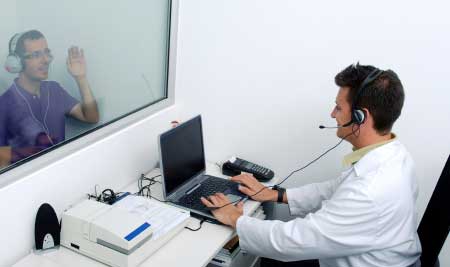Sound is a strong physical force. Not only can the physical effects of sound be measured on a human being, so can the psychological, emotional and mental effects.
 Not all sound is good for you.
Not all sound is good for you.
Most people know that very loud sounds, especially when they are sustained, can damage your hearing. We don’t always pay attention to this because we can’t feel or tell when our hearing has been damaged. And because we can’t feel it, we don’t always believe that damage is possible. Or, that it is actually happening.
Sound is a form of energy. The energy in the sound wave, the intensity of the sound, or loudness, is measured in decibels, often abbreviated as dB.
The relationship between some common sounds and the intensity measured in dB, is described in the following Decibel Scale Chart.
|
The Decibel (dB) Scale |
|
| 0 dB | threshold of hearing |
| 10 dB | pin drops |
| 20 dB | whisper at 1 metre |
| 40 dB | quiet conversation |
| 60 dB | normal conversation |
| 90 dB | subway train |
| 110 dB | rock concert |
| 130 dB | jet engine |
By definition, zero dB is the threshold of human hearing. Intensity of the sound is doubled with each 3 dB increase. I was surprised when I found this out. Knowing how the scale works puts the volume of these sounds into proper perspective.
For example, normal conversation is usually measured at 60 dB, 63 dB represents a conversation that is twice as loud, 66 dB is twice as loud again, and so on. A subway train is typically measured at 90 dB while a jet engine can approach 130 dB.
Most people feel pain with sound levels between 110 and 130 dB.
“Hearing loss is cumulative, so regular attendance at live concerts and nightclubs puts people at increasing risk, especially if they also spend a lot of time listening to personal stereos. Although workers are required by law to be offered ear protection if they are subject to noise above 85 decibels, there are no statutory limits for the protection of audiences. At concerts, groups may play music amplified to above 120 decibels, which is 1,000 per cent louder than 85 decibels.
One concert in America registered music played at 150 decibels – twice as loud* as the 140 decibels registered by a jet taking off or the crack of a gunshot.” (From http://www.deafened.org/ )
*Sharon’s note: The intensity of the sound is actually 10 times greater at 150 dB over 140 dB. However, to the human ear, it sounds twice as loud. This is an important point to remember. It is the intensity of the sound that does the damage, and the human ear is not well calibrated to detect the actual difference in the intensity of the sound. This makes it very easy for us to remain in an environment where the sound levels are potentially damaging.
What effect does exposure to noise have on your health?
“Elevated workplace or other noise can cause hearing impairment, hypertension, ischemic heart disease, annoyance and sleep disturbance. Changes in the immune system and birth defects have been attributed to noise exposure, but evidence is limited.” (From http://en.wikipedia.org/wiki/Health_effects_from_noise)
“Noises can be especially harmful to children. Scientific research indicates that noisy homes slow down cognitive and language development in young children. In addition, children living and attending schools near noisy highways, railroads, and airports have lower reading scores, and some children living or attending a school near a major airport have experienced elevated blood pressure.” (From http://www.pollutionissues.com/Na-Ph/Noise-Pollution.html)
 Part of auditory wellness, which includes the health of your hearing, is to know what can be damaging to your hearing and what your limits are. Damage is insidious because we can’t always feel or tell when our hearing is being harmed.
Part of auditory wellness, which includes the health of your hearing, is to know what can be damaging to your hearing and what your limits are. Damage is insidious because we can’t always feel or tell when our hearing is being harmed.
For anyone who is concerned that they may be suffering some hearing loss, here is an interesting site hosted by the University of New South Wales in Australia.It allows you to test your own hearing! There are many variables that are present in this test that are not when having an audiologist test your hearing, such as the volume that your computer is set to. It does give you an indication of the quality of your hearing though. For instance, does your graph drop off sharply above a particular frequency, like above 8 kHz, or below 60 Hz? If you have any concerns over the quality of your hearing, please consult an audiologist. And please follow the instructions provided with the test. In particular, DO NOT start by clicking any of the buttons on the top third of the chart. The sound may well be too loud for someone with good hearing.
http://www.phys.unsw.edu.au/jw/hearing.html